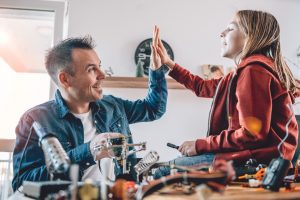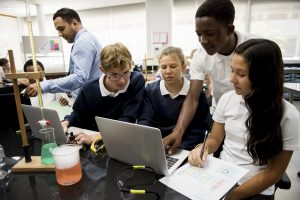As we close out 2020 and greet 2021 with open arms, it seems like a good time to reflect on how classroom practices have changed due to our changing education environment due to Covid-19. What went well, what needs work, and what do we resolve to do about it. Below are some more things I resolve to do in the ever-changing classroom environment (missed part 1? Read it here.)
“These are some of the most trying times in education in our history. Remember your why!”
Use Tools that Engage
As I reflect on the challenges of remote and hybrid learning that 2020 brought us, I think of engagement as one of the fundamentally challenging parts. However, I also reflect on the barrage of technological tools presented to me that promised to solve this problem. From EdPuzzle to Nearpod, Jamboard to Peardeck, SeeSaw to Flipgrid, so many tools promised a solution. Yet, the constant feeling of being overwhelmed prevented many of us, myself included, from truly integrating these tools in a successful manner. While the dust of 2020 may still be settling, it seems like a good time to integrate technology that promises better engagement, participation, and understanding. Here are three tools I resolve to integrate into my classroom:
PearDeck/Nearpod
Depending on the lesson either PearDeck or Nearpod can be wildly helpful for participation. The lessons can be teacher or student paced, and allow teachers to share student work anonymously. This ensures participation, without the embarrassment that comes for students who volunteer (we know how teenagers are). It helps to address misconceptions by stopping them in their tracks so they may be addressed. I resolve to use PearDeck and Nearpod at least once a week for increased engagement.
Flipgrid
This tool is great for having students explain their thinking. Students create short videos of themselves explaining a concept, problem, or term. Teachers can make it so that others can view the videos, or can share only some after submission. This video platform is a great way to assess students’ true understanding of a concept. In this digital age, it is hard to gauge what students understand. Vloging can give educators a true glimpse of student knowledge.
EdPuzzle
This old reliable is something I’ve surprised myself by not using. It is a classic flipped classroom tool to ensure content knowledge is front loaded outside of class time, allowing students to focus on actively engaging in content during class. While seeming like a no-brainer in a remote/hybrid setting, I often find myself feeling like I must lecture or show examples in class. I resolve to stop this, and make EdPuzzle videos that students can watch on their own. This also gives me a reading on what students are or are not understanding.
I have written several blogs over the last year about many different online teaching tools. You can read them here.
Involving Families in Science Education
2020 taught us the importance of science literacy for all. With families often “stuck” inside together all the time, we have an opportunity to involve students’ families in their science education. This can be done via science interviews of relatives, where students sit down with a family member and ask them questions about their experiences in STEM. Students then take part in a two-way conversation that often results in both parties learning from each other. What better time than now to involve everyone in the journey of science?

Remind Students that Science Is for Everyone
With science literacy comes the genuine understanding that science is for all of us. I often hear students and adults alike saying things like, “I’m just not good at STEM.” I firmly believe that this is rooted in poor education practices. Science is for all of us! There is no being good at science, but rather having the opportunity to engage in it. I resolve to remind my students of this as often as possible.

These are my resolutions for the rest of the 2021 school year. What matters to you in your classroom? Center yourself in that, take a breath, and pick something small to start. You’ve got this!







Leave A Comment